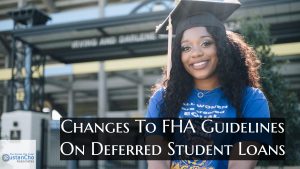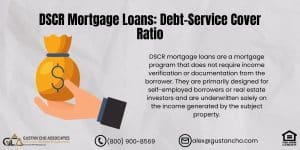This guide covers bankruptcy and foreclosure mortgage guidelines on government and conventional loans. Government and conventional loans have mandatory bankruptcy and foreclosure mortgage guidelines. Bankruptcy and foreclosure mortgage guidelines on government and conventional loan programs are different.
There are three government-backed loan programs: FHA, VA, and USDA loans. A government agency does not back conventional loans. However, conventional loans need to conform to Fannie Mae or Freddie Mac agency guidelines if lenders want to sell closed loans to Fannie or Freddie after it funds.
HUD, VA, USDA, Fannie Mae, and Freddie Mac have mandatory bankruptcy and foreclosure mortgage guidelines. Non-prime loans, such as non-QM and alternative portfolio mortgage programs, have their guidelines. However, NON-QM loans have limited or no waiting period requirements after bankruptcy and foreclosure.
Re-Establishing Credit After Bankruptcy or a Housing Event
A bankruptcy or foreclosure is not the end of the world. Many consumers who have filed for bankruptcy or had a housing event recoup themselves. Bankruptcy and foreclosure will plummet consumer credit scores by more than 100 points. However, the credit score drop is temporary. Even if consumers do nothing, credit scores will eventually go back up as bankruptcy or foreclosure ages.
The easiest and fastest way to rebuild credit after bankruptcy or foreclosure is by getting secured credit cards. The way to boost your credit quickest is by getting three secured credit cards and two credit rebuilder installment loans. You should get three to five secured credit cards with at least a $500 credit limit.
Getting high and re-establishing credit scores is getting three to five $500 credit limit-secured credit cards. Many who get three to five secured credit cards after their bankruptcy discharge or foreclosure can have 700 plus FICO credit scores in about a year. The credit score impact of the bankruptcy or foreclosure will have less impact on consumer credit scores as the bankruptcy or foreclosure ages. The fastest way to re-establish credit after bankruptcy or a housing event is by getting 3 to 5 secured credit cards.
Qualifying For Mortgage After Bankruptcy And Foreclosure
Homebuyers can qualify for a mortgage after bankruptcy or foreclosure—government and Conforming loans require mandatory waiting periods.
Home buyers can qualify for non-QM loans with no waiting period requirements after bankruptcy and foreclosure. However, non-QM loans require a 10% to 20% down payment. Non-QM mortgage rates are higher than government and conventional loans. However, there is no private mortgage insurance premium required on non-QM loans.
There are no loan limit caps on non-QM loans. The key to qualifying for a mortgage after bankruptcy or foreclosure is to be timely on all payments after bankruptcy or foreclosure. Many lenders automatically disqualify borrowers with late payments after a bankruptcy or housing event. Many lenders will classify any borrower who had a late payment after bankruptcy or a housing event as a second offender and will not want anything to do with them. Gustan Cho Associates will accept borrowers with late payments after bankruptcy or foreclosure.
HUD Bankruptcy and Foreclosure Mortgage Guidelines
HUD is the parent of FHA. The U.S. Department of Housing Development has bankruptcy and foreclosure mortgage guidelines. HUD requires a two-year waiting period after the Chapter 7 Bankruptcy discharge date. HUD requires borrowers to have re-established their credit after the bankruptcy discharge with no late payments:
The waiting period requirement is three years after foreclosure, deed-in-lieu of foreclosure, and short sale to qualify for FHA loans.
Borrowers can qualify for FHA loans during the Chapter 13 bankruptcy repayment period one year into the repayment plan with Trustee Approval and manual underwriting. There is no waiting period to qualify for FHA loans after the Chapter 13 Bankruptcy discharge date. Any bankruptcies seasoned less than two years need to be manually underwritten.
FHA Mortgage After Foreclosure Or Bankruptcy
Bankruptcy
- Home Buyers with prior Chapter 7 bankruptcy can qualify for an FHA Home Loans after a two year waiting period after Chapter 7 bankruptcy discharge date
- Meeting the mandatory waiting period does not guarantee to get FHA Mortgage After Foreclosure Or Bankruptcy
- Home Buyers can qualify as long as they have not had any late payments after bankruptcy discharge with re-established credit
- For those who had a Chapter 13 Bankruptcy can qualify for an FHA Loans one year into the Chapter 13 Bankruptcy re-payment plan with the Chapter 13 Bankruptcy Trustee approval
- There is no waiting period to qualify for FHA Loans after Chapter 13 Bankruptcy discharged date
Foreclosure
- Borrowers with prior foreclosure can qualify for an FHA Loans after a three year waiting period from the recorded date of the foreclosure that is reflected on the county records
Short Sale / Deed in Lieu
- FHA will treat a deed in lieu of foreclosure the same as a standard foreclosure
- Three year waiting period after a deed in lieu of foreclosure will apply from the recorded date of the deed of property that is reflected on the recorder of deeds office
Minimum credit scores required to qualify for FHA Loan:
- Minimum down payment required for an FHA loan is 3.5% down payment
- To qualify for a 3.5% down payment, borrowers need a credit score of 580
- Borrowers with a credit score under 580 need a 10% down payment and an approve/eligible per Automated Underwriting System Approval
- The lowest credit score home buyer can have to qualify for FHA Loans is 500
Sheriff’s Sale
- There is a three year waiting period after the date of the sheriff’s sale of the property to qualify for an FHA loan
VA Bankruptcy and Foreclosure Mortgage Guidelines
The U.S. Department of Veterans Affairs has the following VA bankruptcy and foreclosure mortgage guidelines. There is a two-year waiting period after the Chapter 7 Bankruptcy discharge date. You need to wait a two-year waiting period to qualify for a VA loan after foreclosure, deed-in-lieu of foreclosure, or short-sale.
Borrowers can qualify for VA loans during the Chapter 13 bankruptcy repayment period one year into the repayment plan with Trustee Approval and manual underwriting.
There is no waiting period to qualify for VA loans after the Chapter 13 Bankruptcy discharge date. There is no waiting period to qualify for VA loans after the Chapter 13 Bankruptcy discharge date. Any bankruptcies seasoned less than two years need to be manually underwritten.
Bankruptcy Ch 7
- There is a mandatory two-year waiting period to qualify for a VA Loan after the discharge date of a Chapter 7 Bankruptcy
- No late payments after the discharge date of the Chapter 7 Bankruptcy and have re-established credit is key to get an approve/eligible per AUS FINDINGS
Bankruptcy Ch 13
- Veteran home buyers in Chapter 13 re-payment plan can qualify for a VA Loan one year into the Chapter 13 Bankruptcy
- Need to have been timely on all payments for the past 12 months
- Need approval of the Chapter 13 Bankruptcy Trustee
- Consumers with a recent Chapter 13 Bankruptcy discharge, there is no waiting period after a Chapter 13 Bankruptcy discharged date to qualify for VA Home Loans
Foreclosure
- Veteran home buyers with a foreclosure, there is a mandatory two year waiting period from the recorded date of the foreclosure to qualify for a VA Loans
Short Sale / Deed in Lieu
- Veteran home buyers can qualify for a VA Loan after a two year waiting period after a deed in lieu of foreclosure and/or short sale
USDA Bankruptcy and Foreclosure Mortgage Guidelines
USDA Bankruptcy and Foreclosure Mortgage Guidelines require waiting period requirements after the discharge date of bankruptcy or the recorded date of a housing event. There is a 3-year waiting period after the Chapter 7 bankruptcy discharge date to qualify for USDA loans. To qualify for a USDA loan, borrowers have a 3-year waiting period after the recorded date of a foreclosure or deed-in-lieu of foreclosure. There is a three year waiting period after the date of a short sale to qualify for USDA loans.
Bankruptcy
- There is a mandatory three-year waiting period to qualify for USDA Loans after Chapter 7 Bankruptcy discharged date
Foreclosure
- The waiting period to qualify for a USDA Loan after a foreclosure is three years from the recorded date of the foreclosure
Short Sale / Deed in Lieu of Foreclosure
- There is a three-year waiting period to qualify for a USDA Loan after a short sale and/or deed in lieu of foreclosure
Conventional Mortgage After Foreclosure Or Bankruptcy
Bankruptcy
- There is a mandatory four-year waiting period after Chapter 7 Bankruptcy discharged date to qualify for conventional loans
- There is a two-year mandatory waiting period to qualify for a conventional loan after a Chapter 13 Bankruptcy discharge to qualify for conventional mortgages
- There is a four-year waiting period to qualify for conventional loans after Chapter 13 dismissal date
Foreclosure
- Borrowers with a prior foreclosure, there is a mandatory 7-year waiting period to qualify for conventional loans after the recorded date
Short Sale / Deed in Lieu of Foreclosure
- FANNIE MAE has updated the conventional mortgage lending guidelines on July 29, 2014, as follows:
- If borrowers had mortgage included in the bankruptcy, the recorded date of the foreclosure is waived
- The waiting period starts from the date of the discharge date of the bankruptcy
- Housing event can be finalized at a later date and does not matter
- Mortgage cannot have been reaffirmed
- No late payments after Chapter 7 Bankruptcy discharged date
NON-QM Jumbo Mortgage Lending Guidelines
Gustan Cho Mortgage Group has two types of Jumbo Mortgage Loan Programs:
- Non-QM Jumbo Mortgages For Self Employed Borrowers
- Traditional Jumbo Loans
NON-QM Jumbo Mortgages for self-employed borrowers are alternative loan programs where federal tax returns are not required.
- We require 24 months of bank statement deposits
- The average monthly deposits are used as income
- If borrowers provide personal bank statements, then 100% of deposits are averaged over 24 months
- If business bank statements are used, then 50% of deposits over the past 24 months are averaged
- Needs to be one bank account
- No overdrafts allowed. 10% to 20% down payment required
- There is no waiting period after bankruptcy and/or housing event to qualify for non-QM jumbo mortgages
- There is no private mortgage insurance required on all non-QM loans and bank statement loans for self-employed borrowers
The minimum credit score required is 620.
Traditional Jumbo Mortgage After Foreclosure Or Bankruptcy
Bankruptcy
- Homebuyers with prior bankruptcy and want to get a traditional Jumbo Mortgage Loan to need to have a mandatory four-year waiting period to qualify for a Jumbo Mortgage
- There is a mandatory five year waiting period after bankruptcy to qualify for a Jumbo Mortgage with multiple bankruptcies on the credit profile
Foreclosure
- The mandatory waiting period after a foreclosure to qualify for traditional Jumbo Mortgage Loan after the recorded date of foreclosure is 7 years from the recorded date of the foreclosure
Short Sale / Deed in Lieu of Foreclosure
- There is a mandatory four-year waiting period to qualify for a Jumbo Mortgage after a deed in lieu of foreclosure and/or short sale
Credit and down payment for Jumbo Mortgage
- Jumbo mortgages are higher risk loans so mortgage lenders want higher credit standards
- Most Jumbo Mortgage Lenders want a minimum of a 700 credit score
- There are some Jumbo Mortgage lenders like myself who can take on a Jumbo Mortgage loan applicant with a credit score of 620 with non-QM jumbo mortgages
- Most Jumbo Mortgage lenders require a 20% down payment
- However, I have special Jumbo Mortgage programs which only require 10% down payment but the mortgage applicant needs a 740 credit score
Fannie Mae and Freddie Mac Bankruptcy and Foreclosure Mortgage Guidelines
Fannie Mae and Freddie Mac set the guidelines on conventional loans after bankruptcy and foreclosure. There are mandatory waiting period requirements on conventional loans. There is a four-year waiting period after a Chapter 7 or 11 bankruptcy to qualify for conventional loans. The waiting period is a four-year waiting period after a deed-in-lieu of foreclosure and short sale. There is a seven-year waiting period to qualify for conforming loans after a standard foreclosure. Conventional loans have a two-year waiting period after the Chapter 13 Bankruptcy discharge date to qualify for conforming loans. There is a four-year waiting period after a Chapter 13 dismissal date to qualify for conventional loans
Mortgage Included In Chapter 7 Bankruptcy
The following waiting period requirements apply when a mortgage is included and discharged through bankruptcy. With conventional and VA loans, the waiting period requirements start from the discharge date of the bankruptcy and not the recorded housing event date. There is a four-year waiting period after a Chapter 7 Bankruptcy discharge date to qualify for conventional loans and a two-year waiting period for VA loans. The date of the foreclosure, deed-in-lieu of foreclosure, or short sale does not matter if the mortgage debt was included in the bankruptcy. With FHA loans, the waiting period starts on the recorded date of the foreclosure, short-sale, and deed-lieu-of foreclosure.
Down Payment Requirements After Bankruptcy or Foreclosure
The waiting period requirements after a bankruptcy or foreclosure depend on the individual wholesale lender. Non-QM wholesale lenders can change the waiting period requirements without notice. Non-QM lenders can have no waiting period requirements or sometimes have a one or two-year waiting period requirement after bankruptcy or foreclosure on non-QM loans.
Not every non-QM mortgage lender have the same lending requirements after bankruptcy or a housing event. The waiting period guidelines depends on each individual mortgage lender. Some lenders require the housing event need to be finalized. Most lenders require the housing event cannot be pending and in limbo.
Non-QM mortgage rates are higher than traditional government and conventional loans. A 10% to 30% down payment is required on non-QM loans. The amount of the down payment depends on the borrower’s credit scores and seasoning of the bankruptcy or housing event. Mortgage rates depend on the borrower’s credit scores, down payment, and the bankruptcy or housing event seasoning.
NON-QM Bankruptcy and Foreclosure Mortgage Guidelines
The waiting period requirements after bankruptcy or a housing event depend on the individual wholesale mortgage lender. There are non-QM wholesale lenders without a mandatory period to qualify for a mortgage after bankruptcy, foreclosure, deed-in-lieu of foreclosure, or short sale to qualify for a mortgage.
The lower the credit scores, the larger the down payment. Recent late payments are allowed on non-QM loans. The minimum credit score required is 500 FICO. NON-QM Loans are for home purchase and refinance transactions.
Cash-out refinance transactions are allowed. Gift funds permitted. Mortgage late payments in the past 12 months are allowed. For more information on non-QM mortgages, please get in touch with us at Gustan Cho Associates at 800-900-8569 or text us for a faster response. Or email us at gcho@gustancho.com. The team at Gustan Cho Associates is available seven days a week, evenings, weekends, and holidays.








